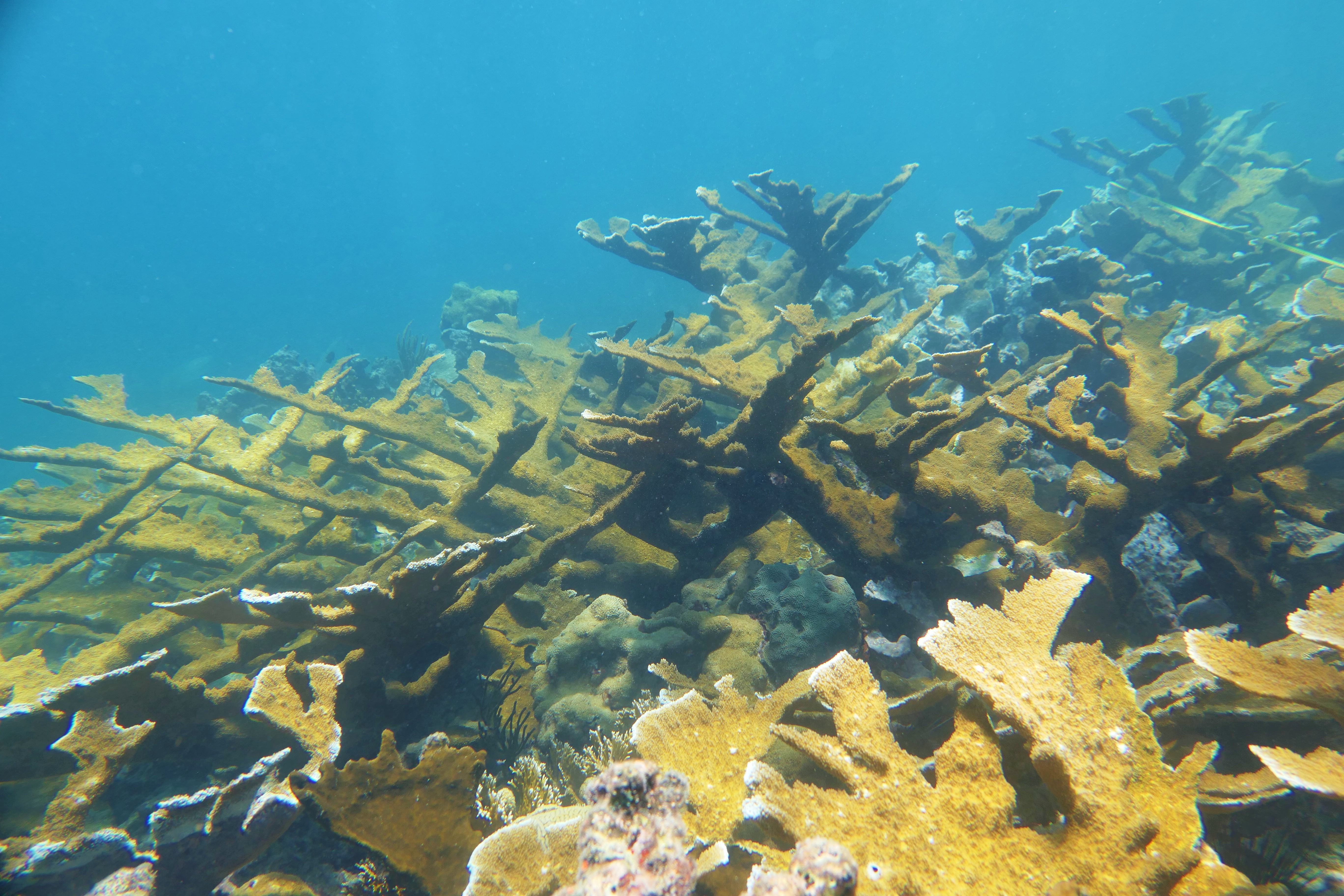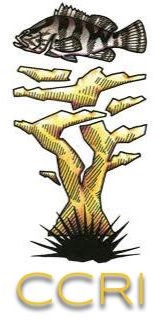Author: Alina M. Szmant, Ph.D.
Institution: Coral Reef Research Group
Year: 2006
The CCRI Szmant and Weil research team emphasized the study of spawning, larval culture and settlement-post-settlement processes of the threatened elkhorn coral species, Acropora palmata, as well as several other Caribbean species, including Montastraea cavernosa, M. faveolata, Diploria strigosa and Favia fragum.

Large quantities of A. palmata spawn were collected from the Tres Palmas Marine Reserve site with the collaboration of visiting scientists from the international aquarists group SECORE. Smaller amounts of spawn were collected from a few branches from La Parguera that were brought into the laboratory because of poor weather conditions in La Parguera during the spawning period. Laboratory-released spawn was also collected for M. cavernosa and D. strigosa. The star coral, Montastraea faveolata, did not spawn this year in La Parguera, presumably because they are still recovering and weakened from the 2005 bleaching event. Many of the large colonies are still pale or diseased; many have lost 50 % or more of their live tissue. Only a few larvae of this species were raised from the few dozen gamete bundles collected. These were used as control samples for assays to detect larvae in plankton samples (see below). All of the other larvae were used in larval behavioral or settlement studies, and in a temperature stress experiment.
A new method for rearing coral larvae using flow through seawater (instead of batch culture) made it easier to raise several hundred thousand A. palmata larvae. This new approach reduces larval stress caused by changing the seawater to remove waste products, and also allows a small team of workers to raise a large number of larvae compared to the previously used batch culture method. However, we learned that for future work we will need to introduce the use of chillers in our seawater system to keep the temperatures within an optimal range for larval development. The SECORE group, working in an air conditioned laboratory, had slower but healthier larvae than the ones we raised in an outdoor location where the temperatures were steadily above 30oC (86oF).
The main objective of this summer’s research was to conduct a multi-factorial experiment (manipulating light and grazing factors) to examine the settlement preferences of coral larvae, a follow-up to previous work that showed larvae of M. faveolata and M. cavernosa preferred to settle on lower, more cryptic reef surfaces. Because we did not collect sufficient larvae of the intended species, M. faveolata, we conducted the experiment with the plentiful larvae of A. palmata, which in Florida experiments had not shown this settlement preference. Contrary to expected, most (ca. 70 %) of the A. palmata larvae selected the under-surfaces of experimental block surfaces for settlement, regardless of experimental treatment, or reef substrate for settlement. Analysis of the substrate characteristics of the experimental settlement blocks is in progress. We will develop a better understanding of settlement choices by A. palmata larvae by examining in detail the characteristics of surfaces that attracted the most larval attachment.
Because we have noticed that temperature seemed to affect our ability to raise healthy coral larvae, we conducted a temperature experiment to determine whether present-day elevated seawater temperatures may be affecting coral larval development. Larvae of A. palmata and D. strigosa were cultured at temperatures of 28oC (82.4oF), 30oC (86oF), 32oC (89.6oF) and 34oC (93.2oF). Larvae at 34oC and 32oC died in less than 24 hrs. Larvae at 30oC survived longer but did not survive to settlement. Larvae of both species raised at 28oC survived to settlement. This suggests that recent summer seawater temperatures of greater than 30oC may have been causing lowered A. palmata (and D. strigosa as well) reproductive success and recruitment potential.
Finally, two new antibody assays developed under the sponsorship of the Global Environmental Fund-funded/World Bank managed Coral Reef Targeted Research Program, that detect larvae of A. palmata and M. annularis (species complex) in plankton samples, were used to measure the abundance of larvae of these species in La Parguera reef waters during the days before, during and after coral spawning. The results show that these assays can be used to address questions of coral larval supply in Caribbean reef areas of concern.
References & more
- Research reports: August 2006, February 2006, October 2005, June 2005, February 2005
- Hernandez-Delgado E.A., Gonzalez-Ramos C.M., Alejandro-Camis P.J. (2014) Large-scale coral recruitment patterns on Mona Island, Puerto Rico: evidence of a transitional community trajectory after massive coral bleaching and mortality. Revista de Biologia Tropical 62(3): 49-64
- Irizarry-Soto E. & Weil E. (2009) Spatial and temporal variability in juvenile coral densities, survivorship and recruitment in La Parguera, southwestern Puerto Rico. Caribbean Journal of Science 45(2-3): 269-281
- Mundy C.N. (2000) An appraisal of methods used in coral recruitment studies. Coral Reefs 19: 124-131
- Ritson-Williams R., Arnold S.N., Fogarty N.D., Steneck R.S., Vermeij M.J.A., Paul V.J. (2009) New perspectives on ecological mechanisms affecting coral recruitment on reefs. Smithsonian Contributions to the Marine Sciences: 437 -457
